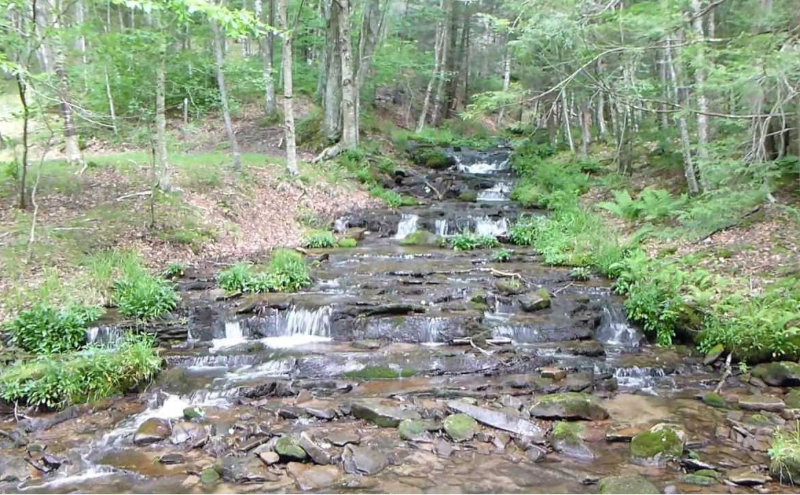Water Sources for Remote Property

I wrote this article in the early days of MSB during 2010. It brought a bit of nostalgia :-) So I decided to update it just a little, and repost.
Are you thinking about a remote property? Away from the conveniences of built-in infrastructure such as a municipal water supply? Maybe you would like to buy a piece of rural / remote land and build on it.
Well that involves careful planning and considerations without “hookups”. One of which is WATER.
Yes, you’re probably going to have a well drilled. But an ideal remote property for the preparedness-minded will also have a source of year-round surface water – for “just in case”.
Find a property that has a source of surface water
A functioning well system is great. But wouldn’t it be nice to also have another source of water? What if your well pump broke? Or you lose power for a while (or a long while!).
Lake. Pond. Stream. Spring. It sure would be a “nice to have”.
Keep this in mind: Surface Water will need to be properly filtered before drinking! I recommend a countertop Berkey water filter (I have this one).
Drill a Well for Water
Drilling a water well can be tricky in that you usually do not have a guarantee that you (they) will hit water. Depends how deep they drill too. It can be expensive!
The location of the property, the soil type, and the depth of the well will all factor into the costs. But you need water, so that’s just part of the expense of rural / remote living.
Drilling. Labor. Excavating. Pipes. Well Pump. Pressure Tank. Controller.
Rain Water Harvesting
You might consider collecting rain water. If the region experiences adequate rainfall, it’s quite doable to supplement your overall water needs.
This plan becomes more involved because you will have to store all of that water runoff. The system will require storage tank(s). And, remember that this will not work during the freezing winter months!
Calculate the number of gallons of rain water runoff
Here’s an example how much water you could collect from just one side of a roof. Let’s say that side’s footprint is 40 feet by 20 feet. You will collect 125 gallons of water from 1/4 inch of rain.
Refer to the following article for more detail on how to calculate rainwater collection (and a handy spreadsheet you can download)…
[ Read: Gallons of Rainwater Collection from a Tarp or other Square Footage ]
- Determine the “square feet” of the roof’s rain water footprint (multiply length x width)
- Convert the inches of rainfall to feet of rainfall (inches / 12)
- Multiply “square feet” of footprint times the amount of rainfall in feet (per storm, or per year…)
- Multiply the total volume of cubic feet by 7.48 to get total gallons
Be aware of any potential toxins. For example, runoff from a tar/shingled roof? A metal roof should be better in that regard. None of it should really matter for gray water usage. But for drinking, think about it. Again, filter it!
A reader had recently E-mailed asking about how to deal with collecting rain water from roof runoff while allowing for the First Seasonal Rain to clear off the accumulated roof debris. The simplest way to deal with this is to purchase a rain diverter system. A diverter valve which can direct the water to the barrel collection system OR down through the normal runoff to the ground. Just leave the valve flipped over to ground runoff during the first rain and then flip the lever over to the barrel afterward.
Here are a few examples of rainwater diverter valves and rainwater collection barrels:
>> Rain Water Collection Systems
(view on amzn)
